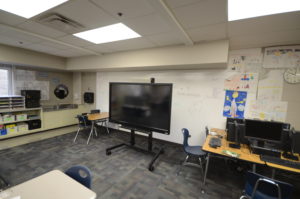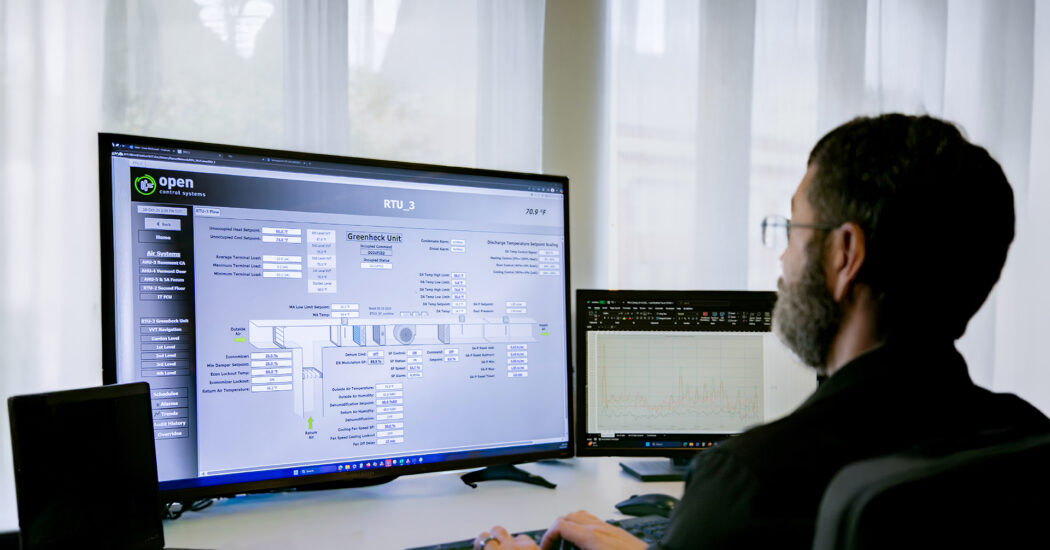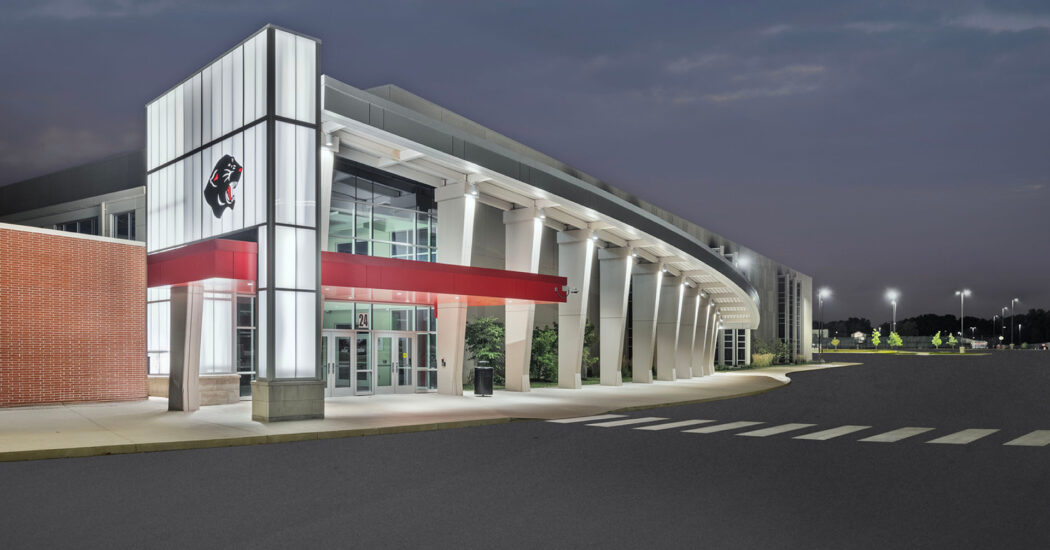The Interactive Classroom
-
Category
Studio-K12, Innovation -
Posted By
Matt Durbin -
Posted On
May 23, 2017
If we’ve said it once, we’ve said it a hundred times. Technology is constantly changing how we function at home, in the workplace, around town, in school, and just about everywhere else in the world. In this blog, we are going to focus on one way we’ve see classroom technology is evolving to fit the needs of 21st century students.
From raggedy pulldown maps and black chalkboards, to chunky projector monitors anchored on a bulky cart in the middle of the room, to whiteboard walls and mounted projectors, the classroom technology landscape has been shifting shape throughout our lifetime rather quickly. We are now rarely including traditional projectors in the classroom, rather we are moving to interactive display monitors that allow students and teachers to be even more in-touch with lessons. In fact, six out of the eight elementary schools Schmidt Associates has designed in the last six months will use interactive display monitors instead of projectors on smart boards.
The interactive display monitors use wireless connectivity. This allows them to sync with mobile devices such as tablets, smart phones, and even laptops to mirror the screen and share the information being worked on with the entire room. Students can display their work within the class and present on how they came to the solution they are discussing. Teachers can integrate multiple levels of engagement within one lesson plan. Students can focus on website pages, videos, and interactive activities all in one place. These display monitors turn a regular classroom into a virtual, hands-on, multi-sensory learning environment. Ultimately, students are more engaged and teachers are fitting more into one lesson.
Each school district has a different reason for moving to this technology, but a driving force is a change in teaching style from lecture style to small group learnings. If a district wants to keep to the front of the room, we wall mount the interactive display monitors. To ensure functionality for all users, we use an adjustable height wall mount unit. For a district that wants the flexibility to move the display monitor, we use a cart. The only limitation on where they can be put is based on the ability to reach a power outlet.

Crestview Elementary School – Interactive Display Monitor
Coordination and design of these systems require similar work as traditional projectors. In some respects, it is easier because it doesn’t require as much wall or ceiling infrastructure, it is all on the cart or mounted unit. We also don’t have to be as concerned about light levels like was needed with traditional projectors.
While we haven’t received many bids on these projects yet to know actual costs for comparison to traditional projection, our estimates show it to be a 10-15% premium. The cost of this technology has become much more affordable in recent years as technology advances. While this is a premium, it has been an ‘easy sell’ so far. The operating costs associated with traditional projectors are higher due to replacing bulbs every year or two. With the interactive display monitor, the warranty covers the first three years, and the projected life span of the technology is 5-8 years.







